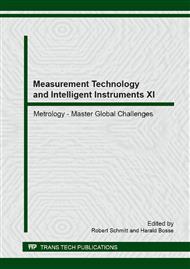p.51
p.58
p.64
p.70
p.81
p.87
p.94
p.101
p.111
Changing Technology Requirements of Mask Metrology in Semiconductor Industry
Abstract:
Upcoming Semiconductor Technology Nodes will still be based on optical lithography by ArF water immersion technology because there are still too many open issues preventing extreme ultraviolet (EUV) lithography from being introduced into production. Several kinds of multi- patterning technology are in use to overcome the optical resolution limitation of 193nm high NA illumination and still to achieve <32nm half-pitch. Mask registration metrology must be adapted to provide useful and comprehensive data on the mask contribution to wafer overlay
Info:
Periodical:
Pages:
81-86
Citation:
Online since:
May 2014
Authors:
Keywords:
Price:
Сopyright:
© 2014 Trans Tech Publications Ltd. All Rights Reserved
Share:
Citation:


